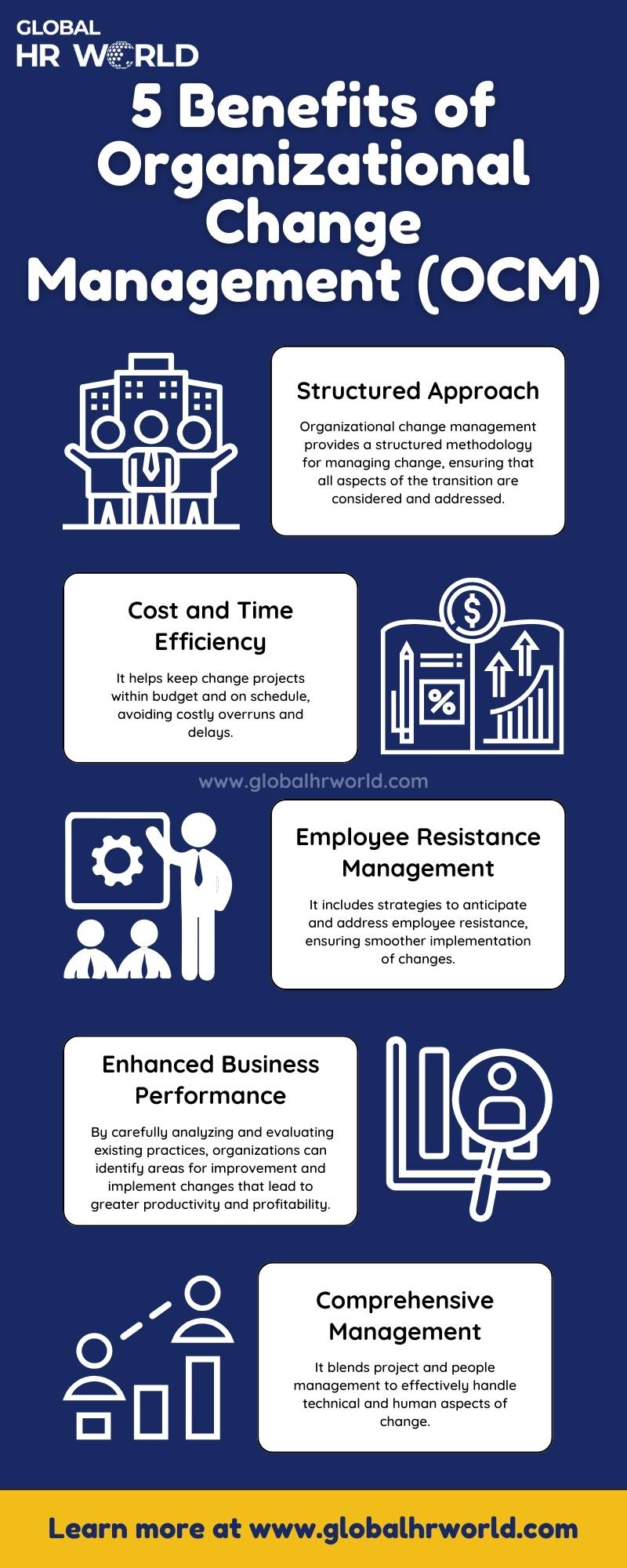Implementing effective organizational change management is crucial for any organization aiming to adapt and thrive in today’s ever-evolving business landscape. This article will walk through the essential stages of implementing organizational change management to ensure successful change management. Let’s begin!
What is organizational change management?
Organizational change management (OCM) is a framework for managing the change and transition within an organization. It is a structured procedure that helps organizations transform from their current state to a desired state, ensuring that changes are smoothly and successfully implemented to achieve lasting benefits. In simpler terms, it’s the process that guides an organization from where it is now to where it wants to be in the future while minimizing resistance and maximizing performance along the way.
Every organization goes through changes periodically during its existence. These transformations can significantly impact the business and its processes, company output, people, and other stakeholders. While sometimes the impact can be negative, affecting the company’s reputation or profitability, it’s important to remember that the changes may also result in greater efficiency, additional sales, or fresh business opportunities. These positive outcomes, which are not just possibilities but achievable goals, are what we strive for in the process of organizational change management.
Here’s a brief overview of what organizational change management typically involves:
- Preparation: This phase of change management includes recognizing the need for change, planning for it, and preparing the organization for the upcoming transition.
- Implementation: In this phase, the actual changes are made. This could involve changing processes, systems, structures, or behaviors within the organization.
- Follow-through: This final phase is not just a formality but a crucial step that ensures the changes are fully integrated into the organization and that the desired outcomes are achieved. Your role in this phase is vital for the success of the change management process.
A formal organizational change management process might be required to effectively deal with change while minimizing its potential negative impact. Organizational change management refers to all the activities and practices that enable an organization to prepare for and adjust to change with minimal negative consequences.
What causes organizational change?
An organization might need to change for several reasons, both inside and outside of it. Inside the company, if there’s a new boss or if teams are rearranged, that can lead to changes. Also, if the company starts doing things a new way, makes its processes better, or gets bigger, these are all reasons it might need to change. On the flip side, things happening outside, like new tech, market trends, or laws, can also make a company switch things up. For example, a company might decide to adopt agile methodologies, requiring a shift in team structures and work processes. Other internal factors like poor communication, discontinuation of products, or operational breakdowns can further compel an organization to change course.
Organizational change can also happen due to external factors like technological advancements and changes in market conditions. For example, the advent of artificial intelligence might prompt a manufacturing firm to automate certain processes, affecting roles and workflows. The rise of new market entrants, socio-economic shifts in the operational locale or target demographics, legislative amendments, and evolving consumer tastes also play pivotal roles.
Common Challenges and Resistances Faced During Organizational Change Management
Resistance to change is a natural human response but can significantly hinder organizational success. Understanding these challenges and implementing effective communication strategies are key to managing this resistance.
Common Challenges
Organizational changes often bring about a variety of challenges that can impact employee morale and the overall effectiveness of the transition. Here are some expanded insights into these challenges with examples:
- Fear of the unknown: Employees may worry about how changes will alter their job responsibilities or threaten their job security. For instance, introducing a new technology might lead to concerns about the need for new skills or the possibility of job redundancies.
- Loss of control: When changes are imposed, employees might feel a sense of powerlessness over their work environment. For example, a top-down decision to restructure departments could leave staff feeling sidelined in decisions that directly affect their daily work lives.
- Bad timing: Implementing change during busy periods or alongside other significant transitions can exacerbate stress and provoke resistance. An example could be rolling out a new sales process at the end of the financial quarter when teams are already under pressure to meet targets.
- Poor communication: If the change is not communicated effectively, it can result in misunderstandings and resistance. For example, if a company decides to merge with another but does not explain the strategic benefits, rumors and anxiety may spread among the workforce.
Each of these challenges requires careful management. Strategies to address them include providing clear and regular communication, involving employees in the change process, offering training and support, and implementing changes in stages to reduce overwhelm and resistance.
Strategies to face these challenges
To effectively face the challenges of organizational change, here are some strategies that can be employed:
- Transparent communication: Establish a two-way dialogue with employees to ensure they feel heard and involved. This helps in creating a positive atmosphere that is conducive to successful change. Have a clear understanding of the current state of the organization and a compelling narrative for the future. Address preliminary questions like why the change is needed and how it will affect the current state.
- Participation: Involve employees in the change process from the beginning. Their input can provide helpful insights and make them feel valued, reducing resistance. Gain organizational buy-in by involving key stakeholders in the change process early on. This helps mitigate resistance and foster a culture of collaboration.
- Training and support: You must provide adequate training and support to your employees to help them adapt to new systems and processes. This can reduce anxiety and improve competency in new roles. Establish support systems such as help desks or peer advocates to assist employees in making transitions. Moreover, it encourages employees to think innovatively and provides resources for them to develop new strategies. This can help them reach organizational goals and adapt to change.
By understanding the roots of resistance and proactively addressing these challenges through strategic communication and engagement, organizations can enhance their capacity to manage change effectively. Implementing these strategies ensures not only the success of organizational changes but also promotes a more adaptable and resilient workplace culture.
Infographic

Knowledge Check!
Frequently Asked Questions (FAQs)
What is organizational change management?
Organizational change management is a framework for managing the change and transition within an organization.
Why do we need organizational change management?
Organizational change management is essential because it helps ensure that the changes an organization needs to make are implemented smoothly and effectively.



